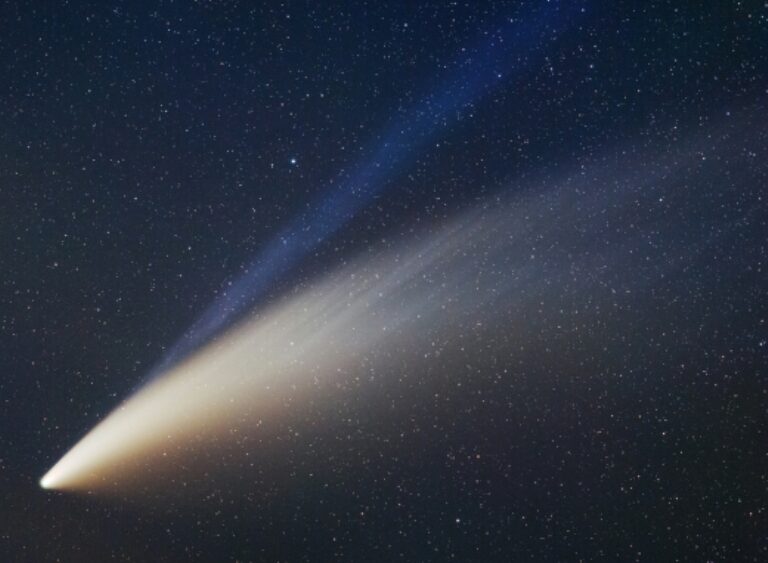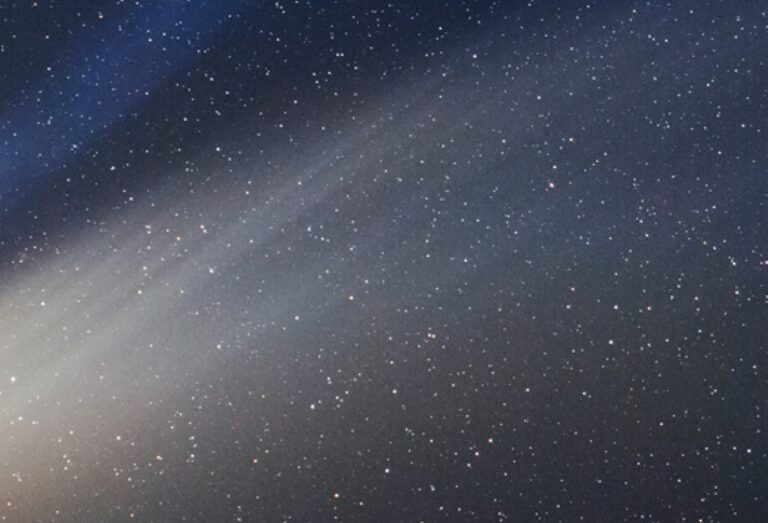
© Chris CookThe blue tail is made of ionized gas; the yellow tail with striations is made of dust.
It has sprouted synchronic bands. Also known as "striae," these bands divide the comet's dust tail into linear regions of greater and lesser density. Chris Cook of Cape Cod, MA, captured the phenomenon on the evening of July 15th.
"Comet NEOWISE is now in its full glory for northern hemisphere observers," says Cook. "This image is a stack of thirty 25s exposures at ISO1600.
It clearly shows the formation of synchronic bands within the dust tail."Synchronic bands have been seen in comet tails
for centuries, yet only recently have astronomers begun to understand what they are. The turning point came in 2007 when European and NASA spacecraft observed the formation of striae in Comet McNaught (C/2006 P1). The process starts when a chunk of comet detaches itself from the nucleus. Boulder-sized chunks fragment into smaller and smaller pieces, a cascade shaped into long streamers by solar radiation pressure.

A close-up of the dusty striae photographed by Chris Cook
A few years ago, then-PhD student Ollie Price of University College London's Mullard Space Science Laboratory was looking at old pictures of McNaught's striae and noticed some "weird goings-on." The bands were occasionally being bent and disrupted by some invisible force. "So I set out to investigate what might have happened to create this weird effect," he recalls.
Price and colleagues ultimately found the answer. The disruptions occured when Comet McNaught crossed the
heliospheric current sheet (HCS)--a vast wavy structure in interplanetary space separating regions of opposite magnetic polarity.
"It appears the dust may be electrically charged, and gets rearranged as it crosses the HCS boundary," says Karl Battams of the Naval Research Lab, a co-author of
their 2018 paper.
Could the same thing happen to Comet NEOWISE? It's possible. Photographers monitoring NEOWISE are encouraged to keep a sharp eye on the striae. Changes may be in the offing.
GOOD OMENS for the WORLD and All 12 astrological SIGNS! Once in 6800 years!
[Link]